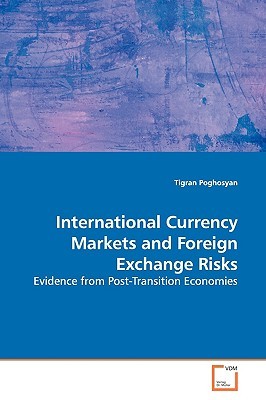
- We will send in 10–14 business days.
- Author: Tigran Poghosyan
- Publisher: VDM Verlag
- ISBN-10: 3639146743
- ISBN-13: 9783639146745
- Format: 15.2 x 22.9 x 0.6 cm, softcover
- Language: English
- SAVE -10% with code: EXTRA
International Currency Markets and Foreign Exchange Risks (e-book) (used book) | bookbook.eu
Reviews
Description
Following the collapse of the socialist system, foreign exchange markets in most post-transition economies have experienced periods of turbulence and instability. These developments have increased the interest of the public and policymakers to identify the key factors driving risks in the foreign exchange markets. Although there are numerous studies analyzing determinants of foreign exchange risks in the context of developed economies, the issue remains to be relatively unexplored in the context of emerging markets. The aim of this book is to fill this gap in the literature and to provide systematic empirical evidence on the factors driving foreign exchange risks in post-transition countries. Application of modern empirical techniques to unique data allows us to expand our understanding of the origins of foreign exchange risks in countries with underdeveloped financial markets. The book should be especially useful for academic community and policymakers in post-transition economies, foreign exchange traders and international investors expanding their activities to post-transition economies, or anyone else interested in analyzing foreign exchange markets.
EXTRA 10 % discount with code: EXTRA
The promotion ends in 20d.23:05:15
The discount code is valid when purchasing from 10 €. Discounts do not stack.
- Author: Tigran Poghosyan
- Publisher: VDM Verlag
- ISBN-10: 3639146743
- ISBN-13: 9783639146745
- Format: 15.2 x 22.9 x 0.6 cm, softcover
- Language: English English
Following the collapse of the socialist system, foreign exchange markets in most post-transition economies have experienced periods of turbulence and instability. These developments have increased the interest of the public and policymakers to identify the key factors driving risks in the foreign exchange markets. Although there are numerous studies analyzing determinants of foreign exchange risks in the context of developed economies, the issue remains to be relatively unexplored in the context of emerging markets. The aim of this book is to fill this gap in the literature and to provide systematic empirical evidence on the factors driving foreign exchange risks in post-transition countries. Application of modern empirical techniques to unique data allows us to expand our understanding of the origins of foreign exchange risks in countries with underdeveloped financial markets. The book should be especially useful for academic community and policymakers in post-transition economies, foreign exchange traders and international investors expanding their activities to post-transition economies, or anyone else interested in analyzing foreign exchange markets.


Reviews